Kopan Monastery
“The seven Medicine Buddhas, attainers of bliss, strongly prayed for the temporal and ultimate happiness of yourself and all sentient beings. They vowed that their prayers would be actualized during these degenerate times when the teachings of Shakyamuni Buddha are in decline. As the buddhas’ holy speech is irrevocable, you can wholly trust in their power to quickly grant blessings to help all sentient beings in these degenerate times,”
“If you pray to Guru Medicine Buddha, you will quickly accomplish all that you wish. Just hearing the holy name of Guru Medicine Buddha and the sound of his mantra closes the door to rebirth in the suffering lower realms. It is written in the scriptures that you should not have a two-pointed mind (doubt) with regard to these benefits. …”
By Lama Zopa Rinpoche
Medicine Buddha
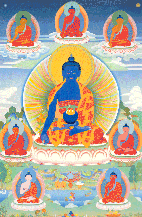
Performed once every month.
Medicine Buddha, dark blue in color, has promised to help all those who are sick and dying, or experience obstacles in their virtuous activities. He is depicted holding a bowl containing the five kinds of medicines. The puja helps to clear and avert obstacles due to sickness and disease, and to bring success in all activities, dharma and worldly. At the time of death the blessings from Medicine Buddha prevent one from falling into the lower states of rebirth. Those already in a lower state of rebirth will be quickly liberated and will take rebirth in a precious human body.
King of Prayers
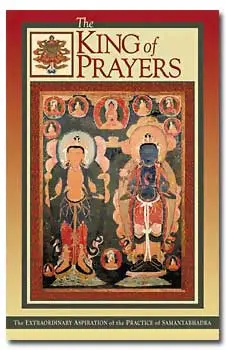
Performed every day.
This prayer is recited daily by the monks during morning prayer assembly. This is the bodhisattva Smantabadra’s prayer of aspiration to be able to benefit all sentient beings during the three great events in their lives: birth, death and bardo. It is one of the prayers of the 8 Eight Prayers to Benefit the Dead (Monlam Namgyal) and brings much merit to the deceased being. It is beneficial to recite this prayer on every 7th day of the passing witin the 49 days.
King of Prayers is most commonly recited to pacify the mind of those who are ill or dying, and to remove all obstacles to higher rebirth for those who have died.
Guru Puja and Tsog
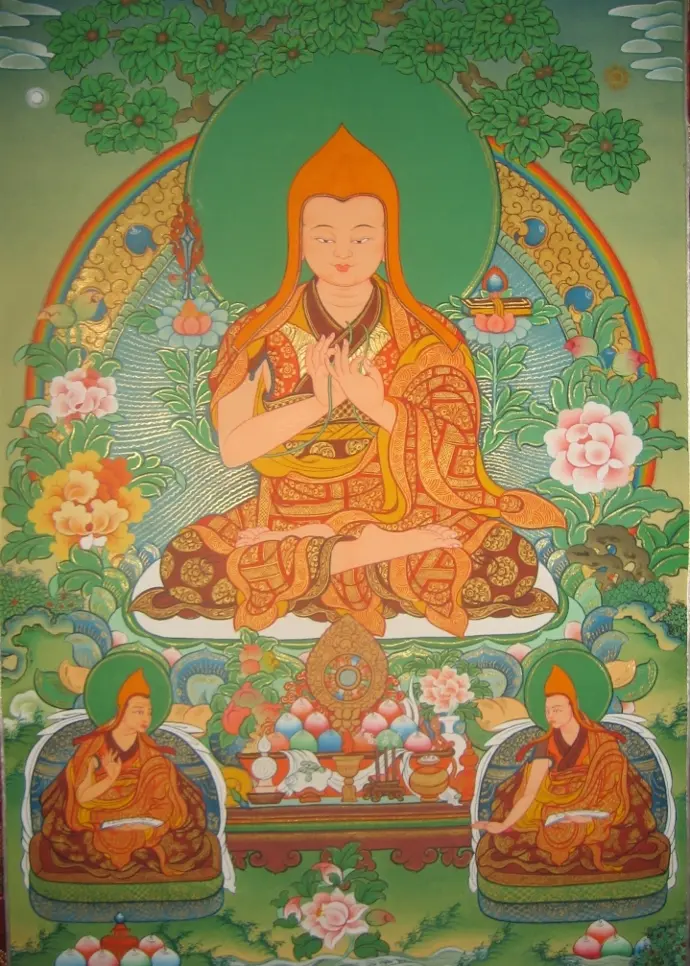
Performed on the 10th and 25th of the Tibetan month
Twice every month guru puja is performed by all the monks in celebration of the spiritual master. This puja is quite often recommended as a means to accumulate merit for those who have died. It is a comprehensive practice containing the essence of the entire teachings of sutra and tantra. It strengthens the bond with one’s spiritual master and creates the cause for finding ones’ spiritual master again in future lives. It accumulates extensive merit – offerings are made to all the enlightened beings in the form of the merit field.
The text of this prayer is available from the FPMT education department.
Mahakala Puja
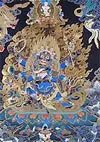
Performed daily by the tantric monks.
This special practice is performed daily in monasteries for the protection of all Dharma practitioners and Dharma places from external and internal obstacles to Dharma activities.
16 Arhat Puja
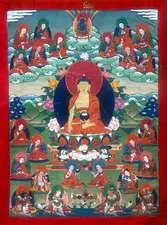
Performed every month on the first day of the Tibetan month.
Also called Neten Chudruk in Tibetan, these 16 Elders were personally chosen by Shakyamuni Buddha from amongst his disciples. He asked them to remain in the world, protecting the Dharma for as long as beings are capable of benefitting from the teachings. At that time they vowed to remain in the world and maintain the Dharma until the teachings came to an end at the appearance of the next World Buddha, Maitreya. This puja is performed at all monasteries, inviting the blessings of the 16 Arhats for the contiuation of the teachings of the Buddha in this world.

